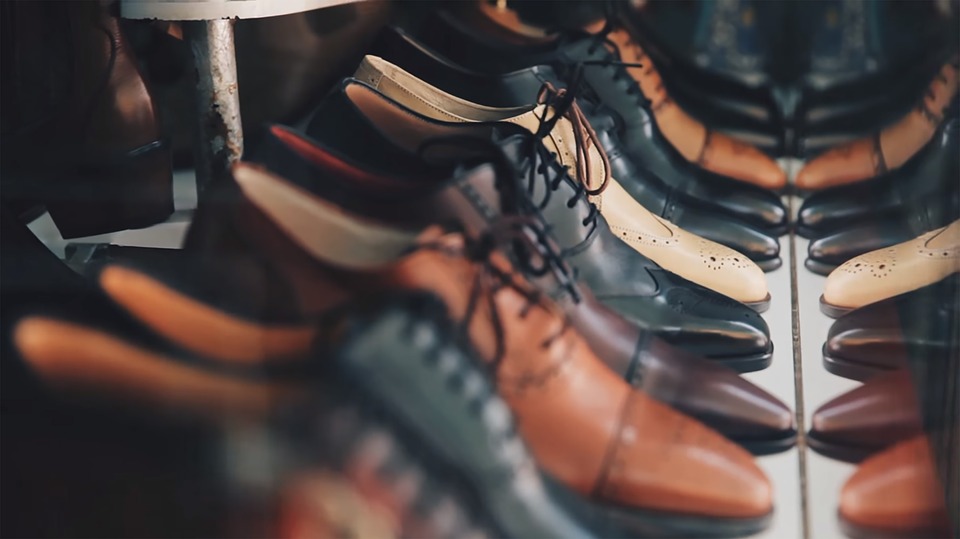From coaches and recliners to shoes, belts, jackets and more, leather is used to produce a wide variety of consumer goods. The term “leather” refers to a flexible and durable material created with tanned animal skin and hide. While most leather is created with cow’s hide, other leather is created with sheep, goat or other animal hide. The animal from which the leather is made will affect its quality and characteristics.
While most people are familiar with the general concept of leather, few know about the different types. To learn more about the different types of leather, including terminology, keep reading.
Chrome-Tanned Leather
Not to be confused with the color chrome, chrome-tanned leather is a special type of leather that’s characterized by its use of chromium salts during the tanning process. When compared to vegetable-tanned leather (see below), it’s typically softer and more pliable, making it the preferred choice among many consumers. Some people refer to chrome-tanned leather as “wet blue” in reference to its color (it looks blueish). With that said, chrome-tanned leather is available in many different colors, only one of which is blue. It’s easy to make and readily available, with reports indicating that roughly 80% of the world’s leather consists of chrome-tanned leather.
Vegetable-Tanned Leather
As the name suggests, vegetable-tanned leather is a type of leather that’s made using the tannins and other natural ingredients found in vegetables. During its production, vegetable matter such as bark, wood, leaves and fruit are added during the tanning process; thus, facilitating the drying and tanning. Vegetable-tanned leather typically has a brown color, though tones may vary depending on the specific ingredients and chemicals used during its production. According to Wikipedia, vegetable-tanned leather is the only type of leather that can be used for carving and stamping. But there are downsides to using vegetable-tanned leather. Unlike many other types, vegetable-tanned leather reacts poorly in water. When exposed to water for a prolonged length of time, it shrinks and becomes brittle, resulting in permanent damage. This is why it’s essential to keep vegetable-tanned leather out of and away from all water sources.
Rose-Tanned Leather
Dubbed the world’s most valuable leather, rose-tanned leather is produced with rose otto oil instead of vegetable and/or emulsified oils. The use of rose otto oil creates a distinct and pleasing odor that’s truly one of a kind. But if you want to get your hands on authentic rose-tanned leather, be prepared to pay a heft price. Rose otto oil is extremely rare and difficulty to obtain; thus, rose-tanned leather also carries a high price tag for the consumer.
Chamois Leather
This type of leather is produced using fish oils (e.g. cod oil). The end result is a leather that oxidizes more easily than other types. The key advantage to choosing chamois leather is its water-absorbent properties. Other types of leather tend to repel water (at least to some degree). But chamois leather actually absorbs it, making it specifically effective for certain applications.
Alum-Tanned Leather
Alum-tanned leather is a type of leather that’s made using aluminum salts, glues and protein sources like flour and egg. It’s a common assumption that alum-tanned leather is tanned — like other types — but its name is actually a misnomer because it’s not tanned. Instead, alum-tanned leather is soaked in a combination of the aforementioned ingredients, resulting in a transformation to a stronger and more durable type of leather.
Full-Grain Leather
The term full-grain leather refers to any type of leather — regardless of animal hide — that has not been sanded or buffed. Some people view full-grain leather as being cheap or otherwise “imperfect” since its natural flaws are not removed. However, leaving the grain untouched by not sanding or buffing it actually offers benefits in terms of strength. Full-grain leather tends to be stronger and more durable than its counterparts. You can find full-grain leather available in multiple finish types, the two most common being aniline and semi-aniline.
Top-Grain Leather
On the opposite end of the leather spectrum is top-grain leather. Unlike full-grain leather, top-grain leather is sanded or buffed. Furthermore, it doesn’t feature a split layer, as this layer is removed before tanning. Top-grain leather is typically thinner and lighter than other types, making it ideal for warm weather clothing. It’s also less expensive than many other types of leather.
Split Leather
Among the leather types with the lowest quality is split leather. Split leather is characterized by the separation of the top-grain of the rawhide from the hide itself. In some cases, additional splits are made to achieve greater results. Split leather is typically used in non-apparel purposes. It’s a low-quality type of leather that’s easy to make with a low production cost.
So, which type of leather is right for you? There’s no easy answer to this question, as different types of leather have their own unique benefits and characteristics. Furthermore, not all leather types are available for all purposes. If you’re looking to buy a new leather jacket, for instance, you’ll probably be limited to some of the higher quality leather types. But if you’re looking to buy shoes or a belt, perhaps lower quality leather types are used. Rather than worrying about the type of leather, consider other factors to gauge its quality. For instance, jackets and other leather garments sold off-the-rack at local retail stores are often cheap and low-quality. But if you custom order your leather products here at LeatherCult, you can rest assured knowing that you are getting the highest quality possible.
These are just a few of the most common types of leather. Of course, there are many other types not listed here. When choosing leather, consider the type, quality and way in which it was made.


